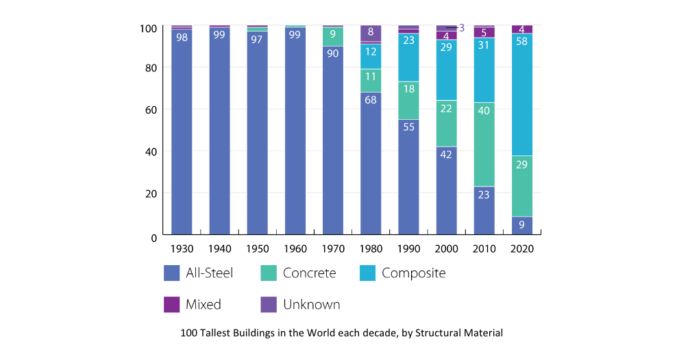Dario Trabucco is a Research Manager at the Council on Tall Buildings and Urban Habitat (CTBUH) and Iuav University of Venice Associate Professor of Building Technology
As part of a series of Q&As, constructsteel is interviewing experts within the construction sector on aspects of steel’s performance and sustainability in the built environment.
The Council on Tall Buildings and Urban Habitat (CTBUH) is the world’s leading nonprofit organisation for all those interested in the future of cities. It explores how increased urban density and vertical growth can support more sustainable and healthy cities, especially in the face of mass urbanisation and the increasing effects of climate change worldwide. The relationship between policy, buildings, people, urban density, urban space, interior space, and infrastructure is key. Founded in the USA in 1969, with offices in Chicago, Shanghai and Venice, the Council runs hundreds of multidisciplinary programs across the world each year, through its regional chapters and expert committees.
constructsteel reached out to CTBUH to better understand how the properties of steel make it an optimal material in the construction of efficient, speedy, and sustainable tall buildings. Using tall building statistics from the CTBUH database, construction trends show that use of all-steel structural systems in tall buildings has been decreasing over the past few decades, in favour of concrete, and especially composite, construction (see Figure 1). The objective of an emerging research project from the Council, entitled “Composite Construction Systems: a Roadmap of the Research Needs to Improve Cost, Constructability, and Sustainable Performance,” is to understand how the steel industry can better support market demand through an improved understanding of the possibilities offered by composite steel-concrete construction.
“The essential benefit of composite construction is that it synthesizes the best properties of both materials—for instance, steel has superior spanning and flexural capabilities, while concrete excels in compressive strength.”
The behaviour of these composites can be considered at two scales: the scale of the building structure, and at the scale of each construction element. The first type—composite structures—are very popular but relatively simple; while the second type—composite elements—have infinite permutations, with many more currently being developed and tested globally. A tall building with a composite structure is a building where a combination of materials, such as steel and concrete, or concrete and timber, are used together to form the main structural elements. One example of this is a concrete core surrounded by a steel frame. The combination of two materials into a single element, where they work together at a smaller scale, is another type of composite. An example of this smaller scale is a column made with concrete-filled steel pipes or a flooring system made by fixing a concrete slab onto a steel beam.
CTBUH will conduct a survey on composite construction with stakeholders in order to identify the advantages and difficulties of construction using composite structures and elements. Simultaneously, CTBUH will review current research on composite elements and include scientific literature and interviews with leading researchers and industry representatives in the field. The scope of this nine-month research project is to ultimately create a roadmap to identify the most pressing research needs for the advancement of composite construction systems for buildings globally and to evaluate the findings within the context of general research guidelines prescribed for leading tall building markets.
